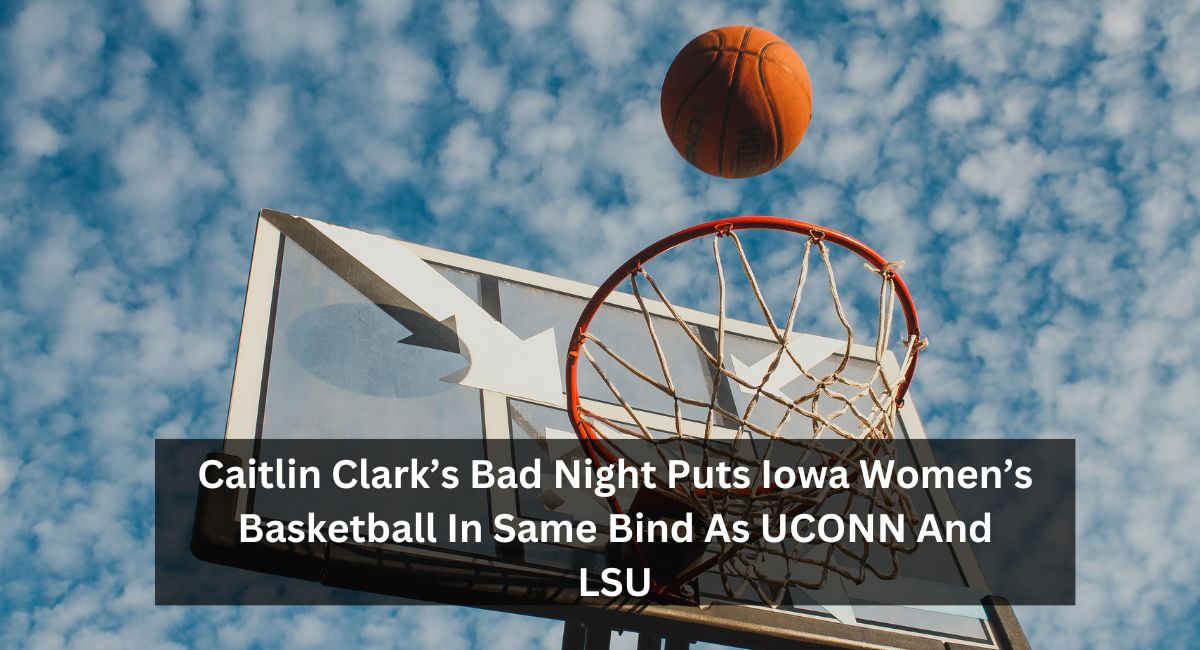In the ever-evolving world of women’s college basketball, individual performances can greatly impact a team’s trajectory, especially during pivotal moments of the season.
Caitlin Clark, the standout guard for the University of Iowa, recently experienced a challenging game that put her team in a predicament similar to those faced by notable programs like UCONN and LSU.
This blog post explores the implications of Clark’s performance, the comparison with UCONN and LSU’s situations, and the broader context of reliance on star players in women’s college basketball.
Caitlin Clark’s Off Night: A Rare Occurrence with Significant Consequences
Caitlin Clark has been a beacon of consistency and excellence for Iowa’s women’s basketball team. Known for her scoring prowess and playmaking abilities, Clark’s performances are often pivotal to Iowa’s success.
However, in a recent key matchup, Clark experienced what can only be described as an off night. Her usual scoring touch was missing, and this had a direct impact on the team’s performance.
Iowa, so often reliant on her offensive output, struggled to find alternative scoring sources, showcasing the team’s heavy reliance on Clark.
The UCONN and LSU Parallel: When Star Players Struggle
The situation at Iowa mirrors challenges faced by other top programs like UCONN and LSU, where the teams have sometimes struggled in the absence of top-level performances from their star players.
UCONN, for example, has historically relied on its marquee players to carry the team through tough matches. Similarly, LSU has seen fluctuations in its performance based on the output of its leading athletes. These patterns highlight a common theme in women’s college basketball: the heavy reliance on star players to shoulder the burden of success.
The Ripple Effect of a Star Player’s Bad Night
When a star player like Clark has an off night, the effects ripple through the team. It’s not just about the missed shots or the lower scoring; it’s about how the team adapts (or struggles to adapt) to the situation.
For Iowa, Clark’s bad night exposed vulnerabilities in their offensive strategies and raised questions about the depth and versatility of their roster. This situation is a wake-up call for teams heavily reliant on one or two players, emphasizing the need for a more balanced approach.
Addressing the Over-Reliance on Star Players
The over-reliance on star players is not a new phenomenon, but it is one that teams need to address proactively. Programs like Iowa, UCONN, and LSU can use these experiences to develop strategies that promote team depth.
This involves fostering the development of secondary players, creating systems that do not overly rely on one individual, and preparing contingency plans for games where the star players might not be at their best.
The Psychological Impact on the Team
An off night for a star player like Clark can also have psychological effects on the team. Teammates might feel added pressure to perform, which can lead to mistakes or hesitation.
Coaches need to work on building the team’s mental resilience and ensuring that players are prepared to step up when needed. This is crucial for maintaining team morale and confidence, especially during high-stakes games.
Lessons from UCONN and LSU
Programs like UCONN and LSU have faced similar challenges and have often found ways to bounce back. They provide valuable case studies for Iowa. Adaptability, resilience, and the ability to develop and trust in a more diversified playing strategy are key lessons that Iowa can take from these programs.
The Future for Iowa and Women’s College Basketball
Clark’s bad night and its impact on Iowa is a reminder of the dynamic nature of women’s college basketball. Teams must continually evolve and adapt. For Iowa, this is an opportunity to grow and diversify their approach to the game.
As for the broader landscape of women’s college basketball, this incident serves as a case study in the importance of team depth and the risks of over-reliance on individual players.
Conclusion
Caitlin Clark’s challenging performance and its impact on Iowa highlights a common challenge in women’s college basketball: the reliance on star players. This situation, mirrored in programs like UCONN and LSU, underscores the need for teams to develop balanced strategies and robust rosters capable of handling the pressure when their key players have off nights.
For Iowa, this is a chance to learn and grow, ensuring that the team does not find itself in a bind when faced with similar challenges in the future. In the bigger picture, it is a reminder of the ever-present need for adaptability and depth in the competitive world of women’s college basketball.
-
How To Use Google Flights ‘Search Anywhere’ Tool To Find Cheap Fares

If you’re a traveler looking for flexibility and affordability, Google Flights offers an incredible tool that can help you discover the best flight deals without a specific destination in mind. Here’s how to make the … Read more
-
Why You Shouldn’t Plant Cucumbers And Tomatoes Together In The Garden

Whether you’re a first-time gardener or a seasoned pro, you’re likely to include both cucumbers and tomatoes in your garden. While they might seem like perfect companions, planting them together can lead to several issues. … Read more
-
10 Recipe Ideas For When You’re Hosting Your Grandparents

Hosting your grandparents for a meal is a special occasion that provides an opportunity to connect, reminisce, and create new memories together. Whether you’re planning a casual brunch, a cozy dinner, or a festive holiday … Read more

